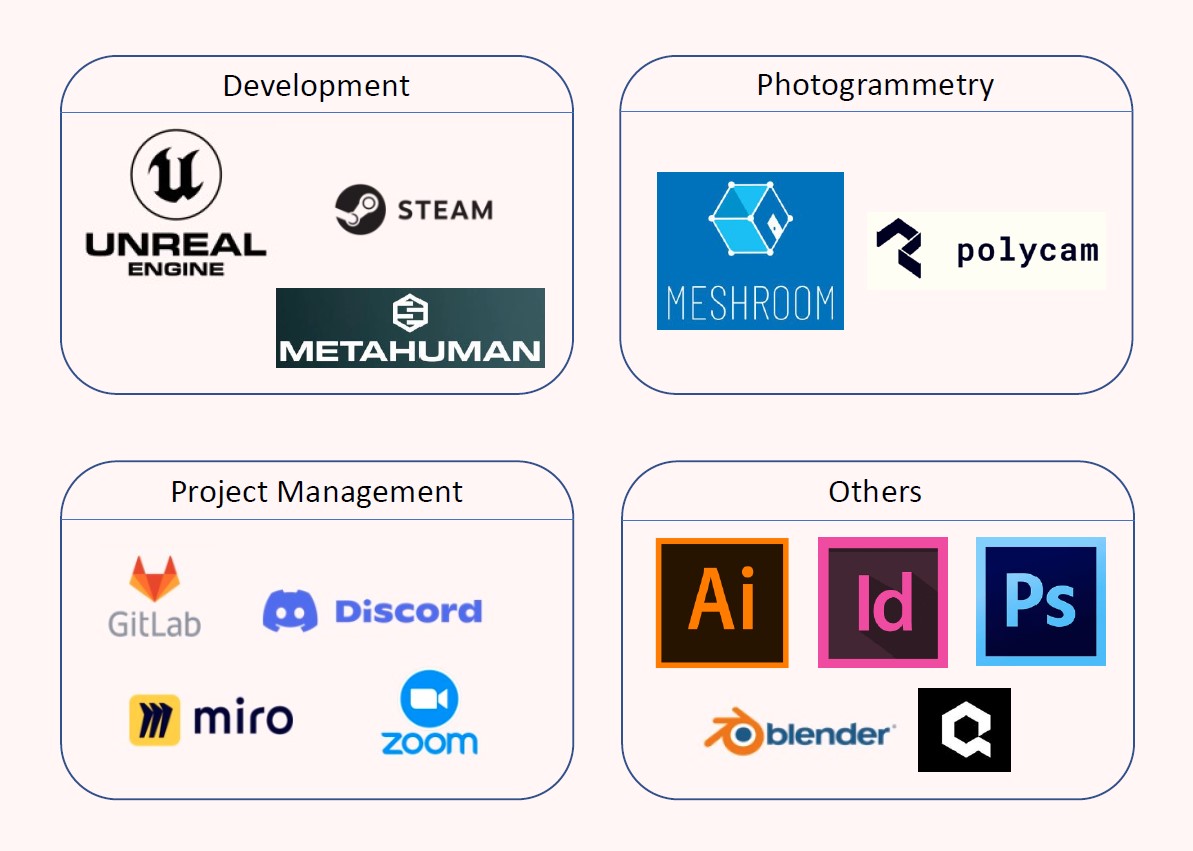- Unreal Engine 5
Unreal Engine 5 was our main tool.
We built our project and put all small parts together as one. - Steam
We were able to play “Could it be more Unreal?” with Steam multiplayer using the Advanced Steam Sessions plugin. - MetaHuman
MetaHuman is a framework that enables anyone to create highly realistic human characters.

Development
Modeling
- Blender
Blender is a 3D content creation software and was used to create assets for our project. - Quixel Bridge
Quixel Bridge is an asset marketplace containing thousands of real-world scanned 3D assets (Megascans) and surfaces.
Brand Design
- Illustrator
Adobe Illustrator is a vector based graphics program for creating the icons of the radial menu and the graphics for the tutorial screen. - Indesign
To create a quick storyboard, a self-created template in InDesign was used. This gave us the opportunity to iterate more quickly in the process of finding the visual language for the trailer.
Texturing
- Photoshop
For editing some textures from the version downloaded online or masking out the people for better photogrammetry results, Adobe Photoshop was used.
Photogrammetry
- Meshroom
Free photogrammetry tool to turn our photos into rough 3D-Models for the busts in the final part of the demo. - Polycam
Polycam was used for photogrammetry scans where Meshroom did not give the desired result. Polycam seemed promising at first because it uses a Lidar sensor in addition to the images, but in the end only the Photo mode was used because it provided a higher level of detail.
Communication
- Discord
We kept very close contact via Discord as a team and exchanged information almost daily via chat. - ZOOM
ZOOM was used for meetings with our supervisor Prof. Dr. Tobias Lenz every two weeks. We discussed our current progress and talked about how to proceed.
Version Control
- Git (HTW GitLab)
Git is a free software for distributed version management of files. In this project, Git was used in combination with the Large File System. Git turned out to be the most cost-effective solution, but not necessarily the best technical combination with the Unreal Engine. - SmartGit
SmartGit is a graphical Git Client that was especially useful for selectively reverting unwanted changes on branches so they could be safely merged into the main branch.
Other
- Miro
Especially in the idea generation process, a Miro Board was used analogously to a classic whiteboard. Classic brainstorming techniques were used, mood boards were created and ideas were visualized as well as discussed.